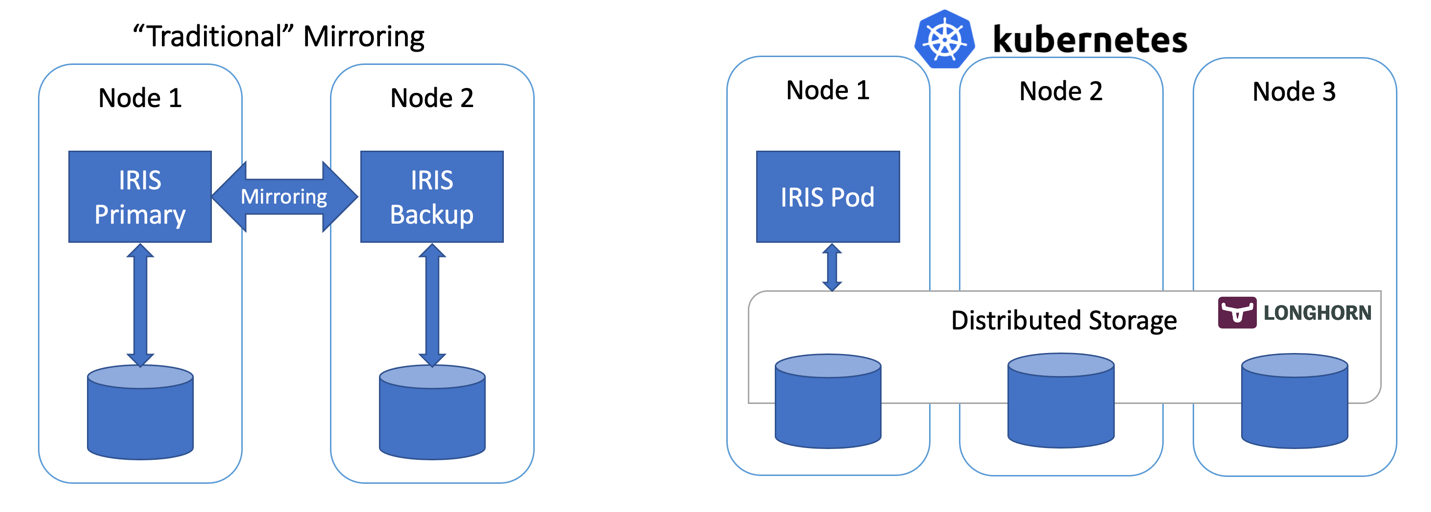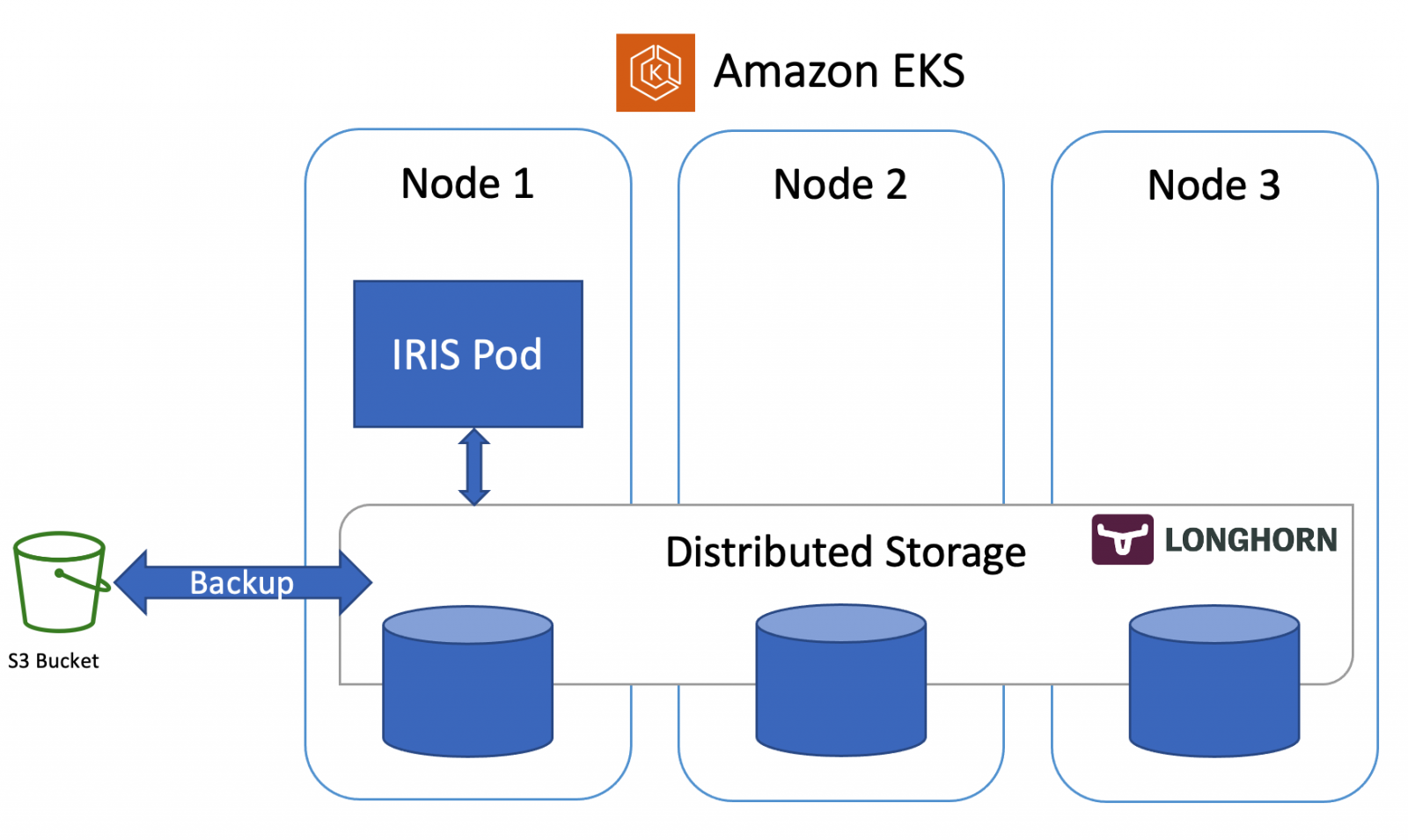In this article, we’ll build a highly available IRIS configuration using Kubernetes Deployments with distributed persistent storage instead of the “traditional” IRIS mirror pair. This deployment would be able to tolerate infrastructure-related failures, such as node, storage and Availability Zone failures. The described approach greatly reduces the complexity of the deployment at the expense of slightly extended RTO.




I was understanding the cluster configuration supported by the Cache. Have couple of queries around that:
1. In Cache version 2018.2, there is a shrading concept which splits the data of a Master Data server into multiple small data server which store shraded data.